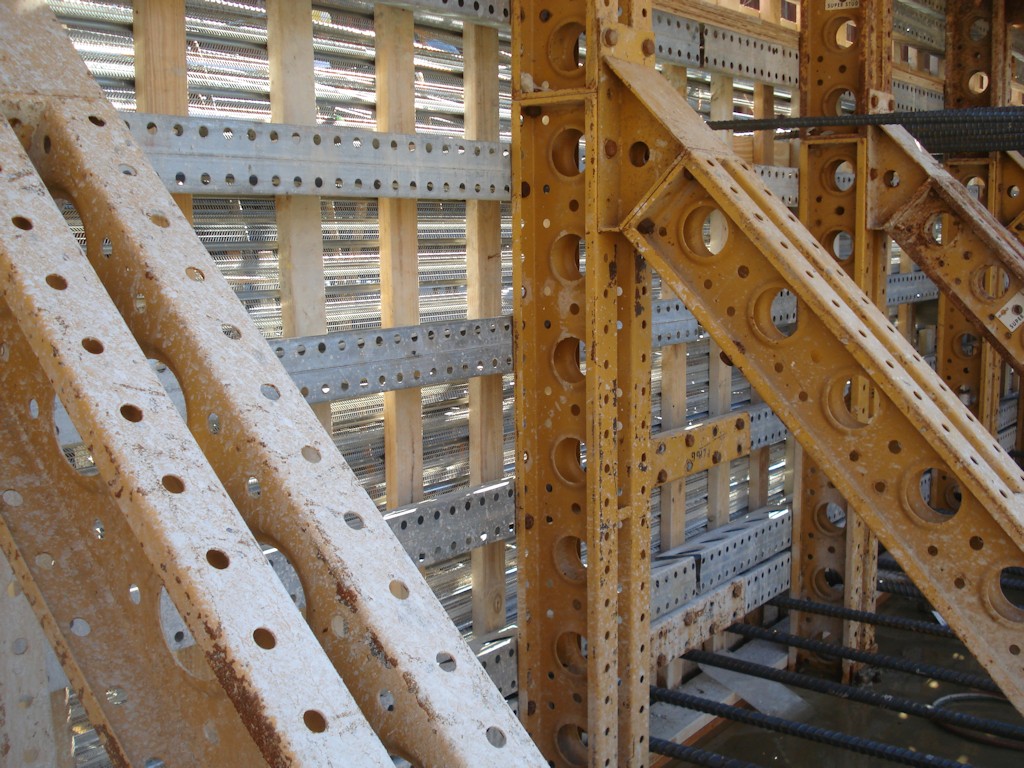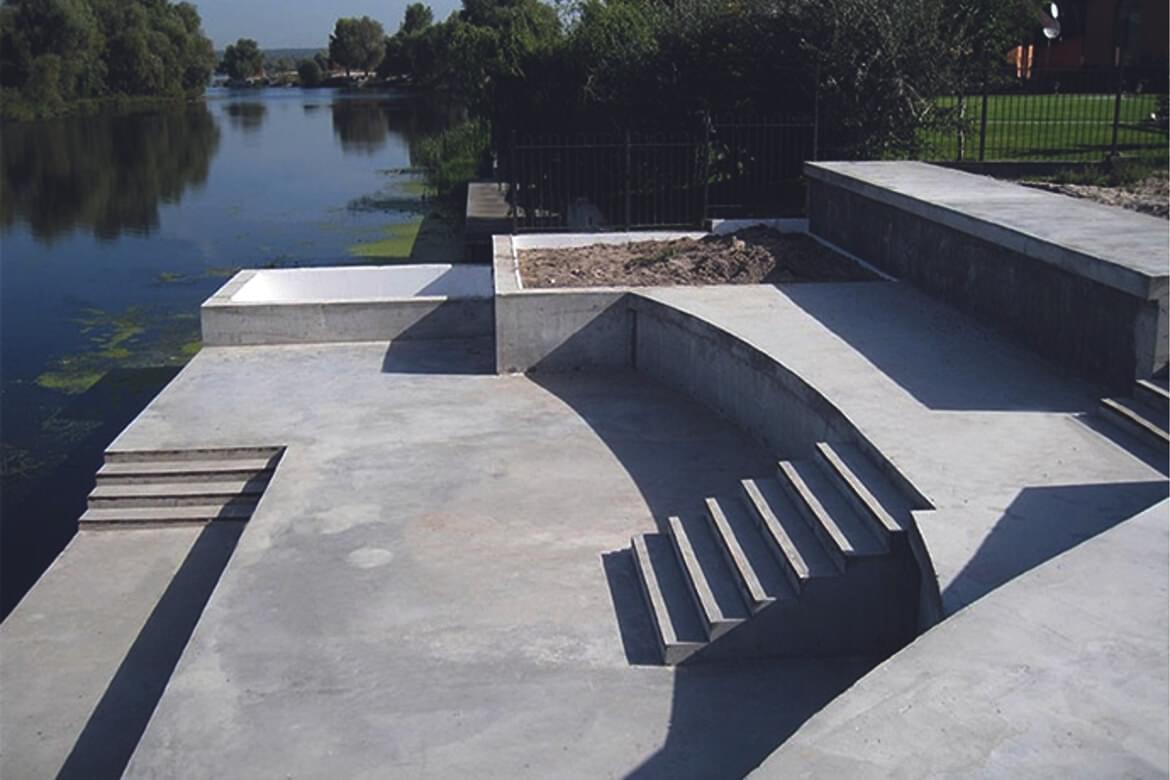Exploring the Various Uses Bulkhead Structures in Modern Architecture
Bulkhead frameworks play a considerable duty in modern-day design, offering both useful and visual objectives. They can specify rooms, enhance storage remedies, and improve illumination. In business setups, they act as focal factors that mirror brand name identification - Bulkhead on Lake Livingston. Additionally, their combination often sustains sound management and lasting techniques. Recognizing the complete extent of their applications discloses much concerning modern layout fads and customer experience. What innovative uses bulkheads might emerge in the future?
Defining Bulkhead Structures
Bulkhead structures play a critical duty in contemporary architecture, working as vital parts in numerous building layouts. These frameworks are typically defined as elevated systems or ceilings, commonly made use of to hide mechanical systems, circuitry, or pipes. Bulkheads can be found in both domestic and business settings, where they supply a smooth blend of performance and looks. Their design can incorporate lighting components and various other ornamental aspects, enhancing the overall visual allure of a space.
Typically constructed from products such as timber, drywall, or metal, bulkheads can be tailored to fit the architectural design and demands of the structure (Bulkhead on Lake Livingston). They serve not only to hide unattractive infrastructure but additionally to create specified zones within open spaces. By taking care of the flow of a room, bulkheads add to the spatial company, making them a considerable facet of modern building practice. Consequently, their interpretation encapsulates both visual and functional dimensions
Practical Applications in Residential Design
Bulkhead frameworks play an important role in residential style by facilitating area optimization techniques that optimize useful areas. They contribute aesthetic style aspects that improve the aesthetic charm of living rooms. In addition, these frameworks offer essential structural assistance remedies, guaranteeing the honesty and security of the home.
Space Optimization Techniques
As contemporary residential designs progressively prioritize effective usage of room, ingenious techniques arise to optimize capability without compromising appearances. One noticeable method involves the integration of bulkhead structures, which can delineate locations while providing essential storage space services. These structures can be employed to produce upright storage systems that improve both organization and ease of access. In addition, multi-functional furniture, such as foldable tables and exchangeable couches, enhances bulkhead layouts, enabling spaces to adjust to varying requirements. Open flooring plans even more optimize spatial circulation, urging flexibility in operation. Incorporating integrated shelving and recessed lights within bulkheads likewise adds to a streamlined setting, making certain that every square inch of area is used successfully and sympathetically within the general design.
Visual Layout Aspects

Architectural Support Solutions
In modern-day residential style, an effective structural support option is vital for preserving the honesty of spaces while optimizing design and functionality. Bulkhead frameworks play a substantial role in this situation, functioning as both support and partitioning aspects. They can hide mechanical systems, such as pipes and electric circuitry, while giving reinforcement to the ceiling and flooring systems. By purposefully positioning bulkheads, architects can produce defined areas within open floor plans, enhancing usability without compromising structural security. In addition, these structures can accommodate lights fixtures, adding to both aesthetic appeals and functionality. To summarize, bulkhead frameworks are important in property style, using flexible assistance remedies that boost both the capability and aesthetic appeal of living spaces.
Enhancing Aesthetic Appeals in Industrial Areas
When industrial spaces embrace cutting-edge bulkhead structures, they not just specify physical borders yet additionally substantially boost the total looks of the atmosphere. These building aspects work as aesthetic prime focus, drawing interest and creating a sense of intrigue. By incorporating diverse materials such as glass, metal, or timber, bulkheads can show a brand's identification and goal, adding to a natural style.
Furthermore, the calculated placement of bulkheads can control light and shadow, adding deepness and dimension to otherwise level rooms. This interplay can transform an industrial area right into a welcoming ambience, motivating customer involvement. In addition, the usage of color and appearance in bulkhead style can stimulate particular feelings, improving the total client experience. Eventually, the thoughtful combination of bulkhead frameworks elevates the visual appeal of industrial rooms, making them not only useful but likewise visually charming, thereby fostering a lasting perception on site visitors.
Acoustic Performance and Sound Administration
Effective acoustic performance plays an essential duty in modern-day architecture, specifically within industrial rooms where sound administration is critical. Bulkhead structures can greatly improve acoustic high qualities by absorbing sound, minimizing echo, and mitigating noise transfer between areas. These functions are particularly useful in settings such as offices, theaters, and restaurants, where clear interaction and a pleasant auditory experience are extremely important.
The tactical placement and design of bulkheads can assist create sound-buffer areas, efficiently separating noisy locations from quieter ones. Materials made use of in bulkhead building and construction, such as acoustic panels and soft finishes, add to their sound-dampening capacities. Additionally, the incorporation of bulkheads permits for the browse around this site assimilation of sound-absorbing components without jeopardizing aesthetic appeal. By resolving acoustic performance, engineers can produce harmonious atmospheres that improve convenience, improve individual experience, and promote performance, making bulkheads a vital component in the design of modern commercial rooms.
Incorporating Bulkheads for Efficient Space Utilization
Although commonly neglected, the assimilation of bulkheads in architectural layout can substantially enhance room usage in contemporary buildings. These architectural components offer several useful purposes, providing a way to conceal mechanical systems, electric circuitry, and plumbing without jeopardizing appearances. By strategically positioning bulkheads, designers can develop defined locations within open flooring plans, therefore helping with far better organization and circulation.
Furthermore, bulkheads can integrate storage space remedies and lighting attributes, making the most of the performance of or else squandered upright area. In household settings, they might delineate areas such as cooking areas or living locations, while in business areas, they can improve the performance of layouts by clearly noting pathways and workplace.
Ultimately, the thoughtful integration of bulkheads adds to a much more aesthetically enticing and organized environment, enabling versatile spaces that can evolve with the requirements of their passengers. This strategy not just maximizes room but likewise cultivates an extra harmonious communication in between type and function.
Bulkheads in Public Style

Building Aesthetic Enhancements
While lots of architectural elements go for performance, bulkheads in public style serve a twin purpose by my response boosting visual charm. These structures often create visual passion with their design, integrating flawlessly with bordering elements. By utilizing various materials, structures, and shades, bulkheads can add to a distinct identification for public areas, such as airport terminals, galleries, and libraries. Their calculated positioning helps to define areas, leading visitors while adding deepness to the overall layout. In addition, bulkheads can emphasize illumination, developing vibrant ambiences that change throughout the day. This aesthetic improvement not only elevates the visitor experience yet additionally promotes a local color, making bulkheads a vital consideration in modern-day public design. On the whole, bulkheads personify the combination of form and function.

Architectural Support Solutions
As architects seek innovative ways to boost the architectural integrity of public rooms, bulkheads become vital parts in the design and building and construction process. These frameworks give essential assistance, especially in locations based on hefty foot web traffic or dynamic tons. By dispersing weight equally, bulkheads aid stop architectural failing while enabling flexible design options. In large places, such as stadiums and convention facilities, bulkheads are frequently integrated right into the general architectural framework, guaranteeing stability and safety and security. Additionally, they can help with the incorporation of energies and mechanical systems, adding to the effectiveness of area use. Ultimately, bulkheads stand for a critical remedy in modern-day public design, strengthening both functionality and safety in community-focused settings.
Environmental Protection Steps
Integrating environmental management measures right into public architecture has come to be progressively essential as urban designers prioritize sustainability alongside structural support. Bulkhead frameworks offer a twin objective hereof, acting as barriers against disintegration and flooding while at the same time boosting the aesthetic charm of metropolitan landscapes. Their design often includes natural environments such as plants, which can boost air quality and offer habitats for wildlife. In addition, bulkheads can be crafted with absorptive products that permit for water absorption, reducing drainage and promoting groundwater recharge. This assimilation of ecological factors to consider not only preserves see this page the atmosphere yet also cultivates area strength versus climate change. By making use of bulkheads efficiently, designers add to sustainable city advancement that aligns with contemporary ecological goals.
Future Patterns in Bulkhead Layout
Arising fads in bulkhead design show an expanding emphasis on sustainability, advancement, and capability in modern style. Designers are increasingly integrating environment-friendly products, such as recycled composites and bioplastics, to reduce environmental effect. In addition, the integration of clever innovation is becoming common, allowing bulkheads to offer multi-functional functions, including power storage space and environment control.
In urban settings, modular bulkhead systems are acquiring traction, supplying adaptability in design and simplicity of installation. These systems can be adapted to different landscapes, enabling effective room application. Furthermore, aesthetic considerations are advancing; bulkheads are now being designed to improve aesthetic appeal, usually integrating imaginative aspects that reverberate with regional culture.
As climate resilience becomes a priority, future bulkhead layouts will likely prioritize flood protection and stormwater management, making certain structural stability while dealing with ecological challenges. This shift signifies an all natural strategy to style that meets both ecological duties and human demands.
Often Asked Questions
What Products Are Frequently Used for Bulkhead Building And Construction?
Common products for bulkhead building and construction consist of concrete, steel, hardwood, and composite materials. These choices offer toughness, structural honesty, and resistance to environmental factors, making them ideal for various applications in construction and design jobs.
Exactly How Do Bulkheads Affect Structure Power Efficiency?
Bulkheads enhance building energy efficiency by providing thermal insulation and lowering air leakage (Bulkhead on Lake Livingston). They aid keep indoor temperatures, consequently lowering home heating and cooling down needs, ultimately bring about lower energy costs and improved environmental sustainability
Are There Any Kind Of Building Regulations Details to Bulkhead Structures?
Yes, building codes certain to bulkhead frameworks exist, varying by location. These laws normally address safety and security, structural honesty, and availability, guaranteeing that bulkheads meet needed standards for building and design within a given jurisdiction.
Can Bulkheads Be Easily Changed or Gotten Rid Of Later On?
Bulkheads can frequently be changed or gotten rid of, relying on their style and construction. Nevertheless, such modifications may require careful preparation and adherence to building ordinance to guarantee structural stability and safety and security are kept throughout the procedure.
What Are the Costs Associated With Setting Up Bulkhead Structures?
The expenses connected with installing bulkhead structures can vary significantly, usually affected by materials, style complexity, and labor. Typically, expenditures vary from moderate to high, depending on the job's particular demands and area.
Bulkhead frameworks play an important duty in contemporary design, serving as important parts in numerous structure styles. Bulkhead frameworks play a crucial role in household layout by helping with space optimization methods that make best use of usable locations. Typically overlooked, the integration of bulkheads in architectural style can substantially boost space use in modern-day structures. As engineers look for ingenious methods to boost the structural honesty of public rooms, bulkheads emerge as necessary parts in the layout and building process. The expenses connected with setting up bulkhead frameworks can vary considerably, typically influenced by products, style complexity, and labor.